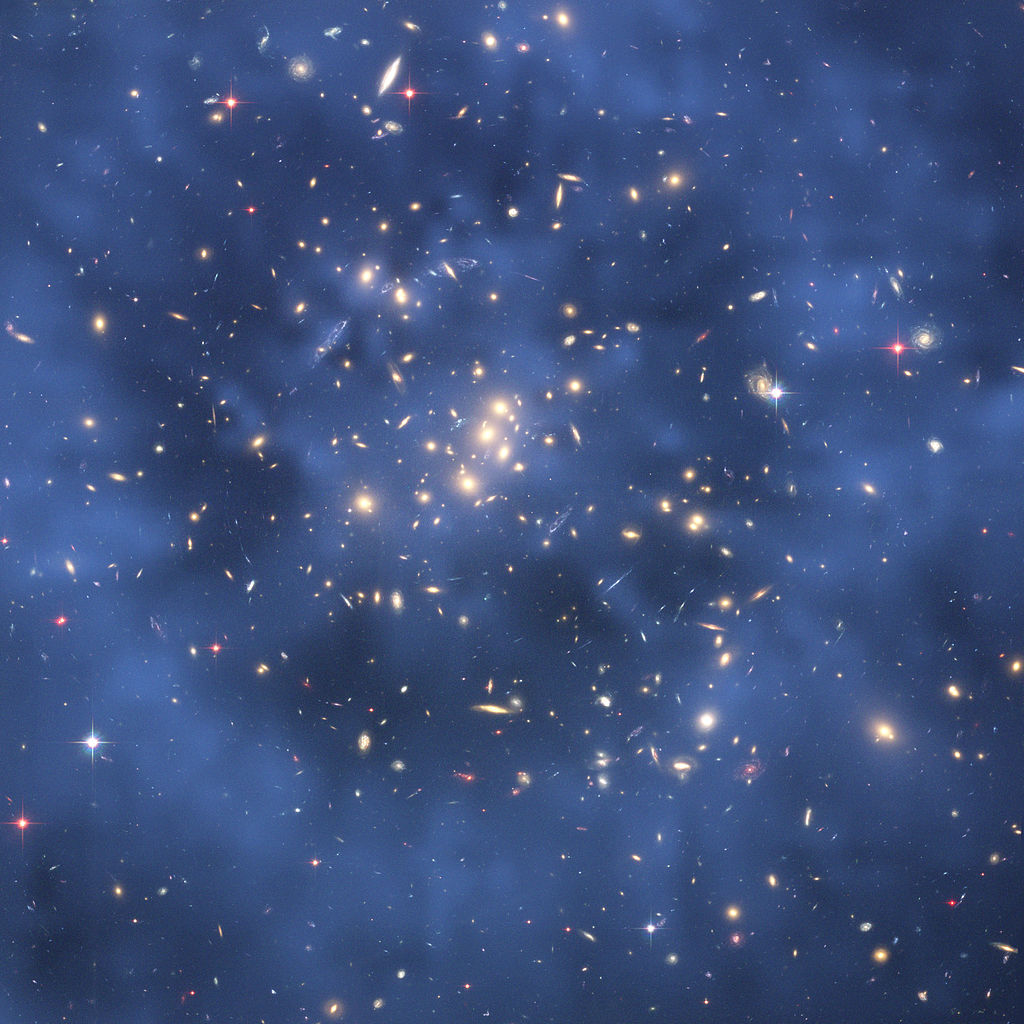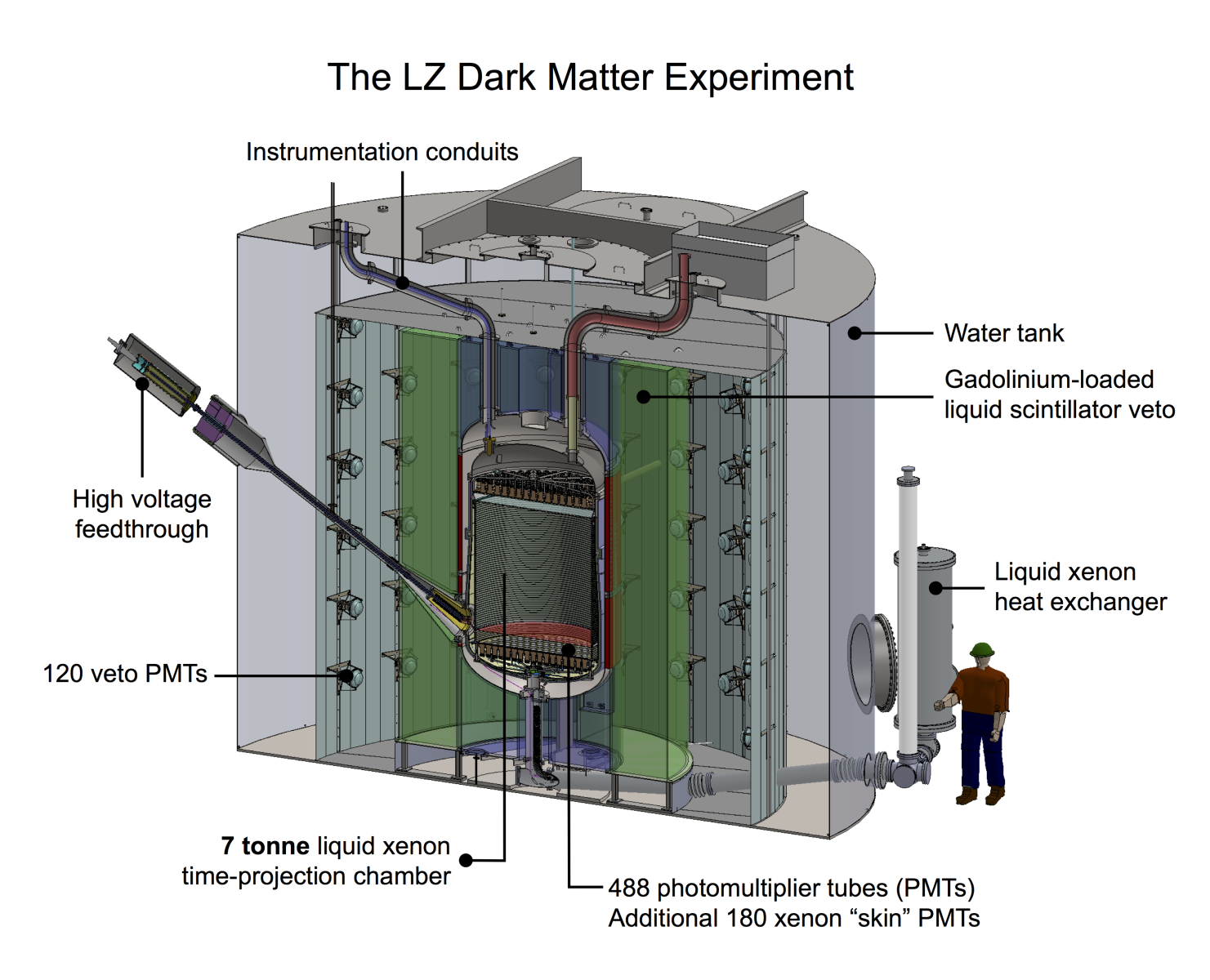Dark Matter detector looking for WIMPs
Interview with
Firing protons at each other to create dark matter may be one way of figuring out  what this elusive substance is, but another is by detecting the dark matter particles that we believe must be bombarding us every second. But how do we do this? Last month, UK scientists were awarded a grant to build the biggest dark matter detector yet! It's called LZ - short for Lux Zeplin - and it will buried deep underground in the US. Scientists like UCL's Dr Cham Ghag, who's one of the researchers involved with the project, hope to start seeing results by 2021, as he explained to Chris Smith...
what this elusive substance is, but another is by detecting the dark matter particles that we believe must be bombarding us every second. But how do we do this? Last month, UK scientists were awarded a grant to build the biggest dark matter detector yet! It's called LZ - short for Lux Zeplin - and it will buried deep underground in the US. Scientists like UCL's Dr Cham Ghag, who's one of the researchers involved with the project, hope to start seeing results by 2021, as he explained to Chris Smith...
Cham - So, the LUX Zeplin or LZ experiment will be going about a kilometre and a half under the surface in the black hills of South Dakota.
Chris - When you say deep underground, what's actually there? Is it like a mine or something?
Cham - It is. It was a former gold mine. All the mining corporations have ended and now, it's a dedicated science laboratory with a couple of experiments, there ready.
Chris - Why go to the lengths of being 1.5 kilometres underground to do these experiments?
Cham - These sorts of experiments have to be made from low radioactivity materials. And that's because we're really looking for a needle in a haystack and we want to make their haystack as small as we can because all materials carry some trace amount of radioactivity.
There's a lot of that about on the surface of the Earth in particular. We're bombarded from space with cosmic rays and so, to get away from those, and the first line of defence, against all these radioactivity that's out there within which we're trying to find the faintest signals from dark matter, we go deep underground. And that really shields us from cosmic rays in particular.
Chris - What, in fact, is the detector your building? How will it work?
 Cham - So, the detector is configured in a Russian doll set up where the first line of defence is the earth itself. It's 1.5 kilometres of rock above us. But then once we're down into the underground laboratory, we have a giant water tank that shields the detector within from radiation that's coming from the rock and the laboratory in the sort of ambient environment. And then within that, we have the primary LUX Zeplin instrument itself which is essentially a tank of liquid xenon.
Cham - So, the detector is configured in a Russian doll set up where the first line of defence is the earth itself. It's 1.5 kilometres of rock above us. But then once we're down into the underground laboratory, we have a giant water tank that shields the detector within from radiation that's coming from the rock and the laboratory in the sort of ambient environment. And then within that, we have the primary LUX Zeplin instrument itself which is essentially a tank of liquid xenon.
Chris - Why do you need xenon?
Cham - So, xenon is a very efficient scintillator, which is to say that if you have something give a xenon atom a glancing blow, although it will only move sort of just a tiny fraction of a millimetre, this tiny energy that's been deposited in the xenon, it produces just a handful, just a few flashes of - well, one flash with a few photons of light. And so, we're detecting the light and the charges that's liberated from xenon when it's had anything interact with it.
Chris - How frequently do we expect that to happen, when your detector is running, how many particles, how many opportunities in a day let's say, are they going to be to see this happening?
Cham - Well, there are two things that we don't know and that's the mass of this WIMP particle and the interaction cross section which is to say, we don't know how likely it is to actually interact with an atom. This dark matter interacts so infrequently that we're only really expecting a few handfuls of events, after a couple of years of running.
Chris - Is there anything else that could look like a dark matter particle and fool you into thinking you're seeing one but you're not, you're seeing something else entirely.
Cham - Yes. Neutrons in particular are a troublesome background. They're sort of a blessing and a curse in that we use neutrons to calibrate our detectors to say, "Okay, if dark matter did hit, what would it look like?"
That's because neutrons produce signatures very similar to WIMPs. But neutrons can be separated from dark matter: The detectors are so large that any neutron that does get in, is likely to bounce around a few times. In contrast, the dark matter particle, we're lucky if we see it hit an atom in the first place. It's really not going to interact again within the detector.
So, single interactions mean dark matter. Multiple means neutrons.
Chris - If you do see some collisions, what will you be able to deduce?
Cham - The number of events that we detect will tell us about the cross section for a dark matter particle to actually interact with a regular atom. And so, that gives us a very nice handle on the interaction with standard model particles.
On top of that, the energy distribution of the events that we do see, that tells us about the mass of the particle itself. So, if we have events that are really quite high energy, that corresponds to the dark matter particle itself being quite a massive particle. If they're all bunched towards very low energies, that tells us that the dark matter particle is a low mass or light WIMP.
Chris - You're the latest in a sequence of these sorts of detectors for dark matter particles. Why have your forebears failed and why do you think this experiment is going to be different?
Cham - All of these experiments have been pushing the envelopes, getting deeper and deeper into unexplored parameters based. So, they haven't seen dark matter but that's because nature hasn't been that kind. We've needed to get more sophisticated, larger, more sensitive essentially, in our searches and get deeper and deeper.
And so, far from previous experiments failing, we've been developing the technology to get to the size of detectors or a scale of many tons of target, and with the low energy thresholds so that we can see the rarest, tiniest of interactions.
And so, we're hoping that now, we have the technological readiness to really get down into where we hope the dark matter lives.
- Previous Are Higgs Bosons the key to dark matter?
- Next The end of darkness?










Comments
Add a comment